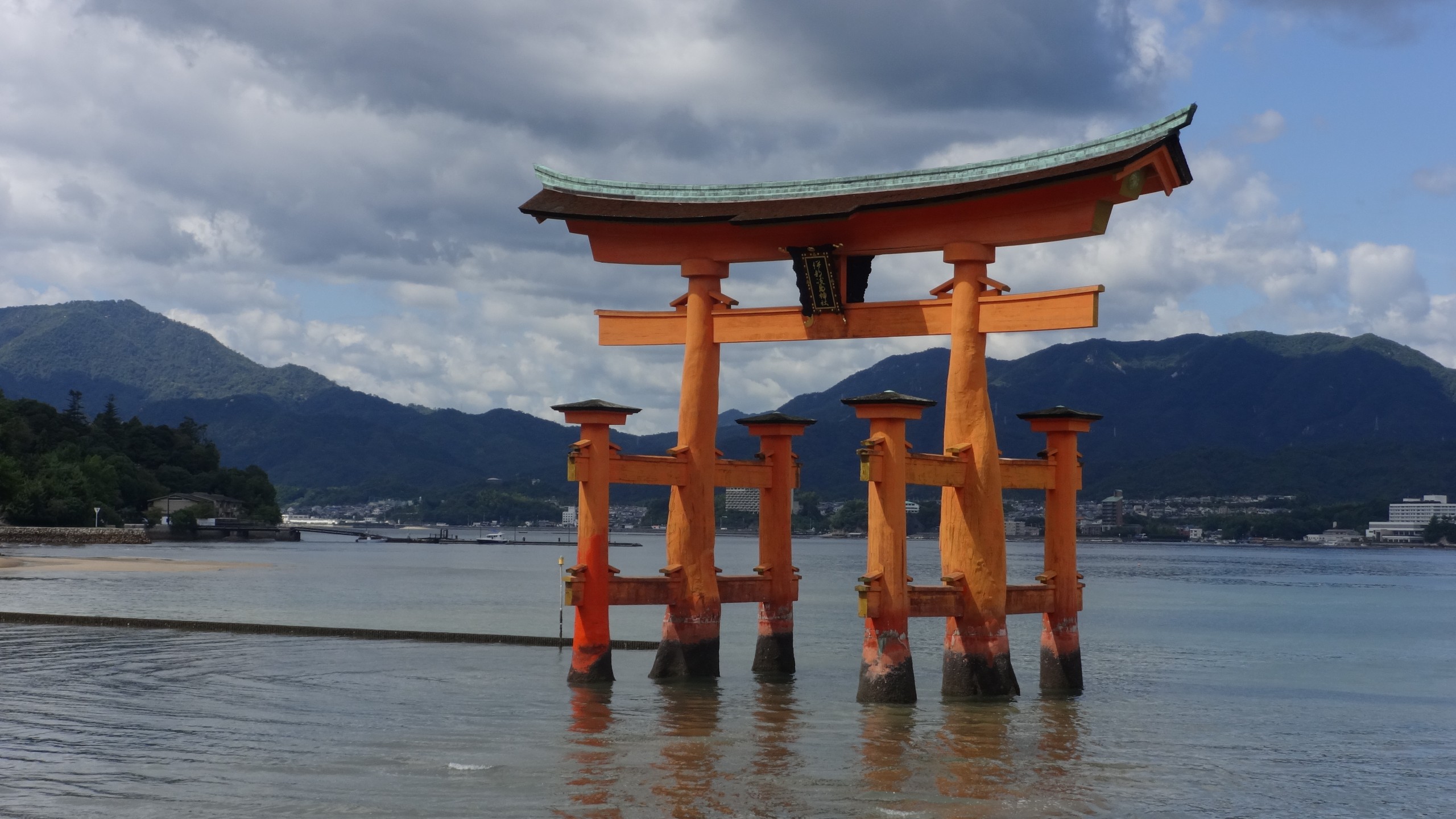
DAY 5
(Reading time: 4 minutes)
The first night spent in the capsule hotel went well. No nightmares, so no reason for a sudden jerking accompanied by a scream from a dream, followed by a second scream after hitting your head on the low ceiling. Nobody around us was snoring, but in the morning we missed a little bit of peace and privacy.
After breakfast we combined a train with a boat (both covered by the JR Pass) and arrived at the nearby island of Miyajima.

The island’s real name is Itsukushima and the nickname Miyajima in Japanese literally means “Shrine Island”. The same name is also given to the shrine on its coast dedicated to three goddesses of the sea and storms. The entrance to the island is symbolically guarded by the iconic red “floating” torii gate. During low tide, people can walk to it on dry land, while during high tide, it looks like it’s floating on the water.

Upon disembarking from the boat, we were greeted by the island’s local residents. There are around 2000 of them, they are gentle, curious and sometimes cheeky like monkeys. Don’t be tempted by their cuteness; you could easily lose anything you’re holding in your hands. I’m talking about the sika deer, which Marek renamed paper-eating roe deer because they apparently liked paper the most out of what careless tourists had.

This spotted fauna is one of the main island attractions. But what interested Marek the most about them?
Are they touchable?
Yes.
Suitable for riding?
No.
Edible?
With a bit of luck and/or courage, of course, everything is edible, although some things only once (the attached photo is purely illustrative).

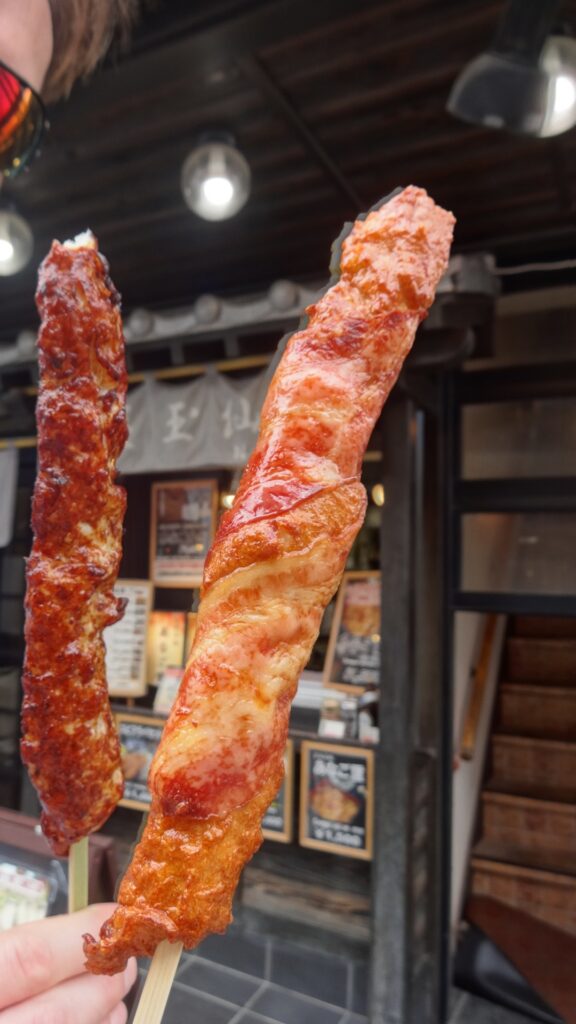
Sika deer are considered sacred animals and messengers of Shinto gods; nobody is allowed to harm them on the island! Therefore, the deer walk freely among the crowds of visitors, especially down by the coast, sticking their noses into bags, which everyone happily forgives them for.

From the shore, we headed to Mt. Misen, the highest point of Miyajima, and used the cable car service to ascend.

It doesn’t go all the way to the top; it’s still about an hour’s walk from the upper station, during which you pass by the Reikado temple. Allegedly, the “eternal flame” has been burning there for 1200 years. From the top of Mount Misen, there are beautiful panoramic views of the Japanese islands.
We walked down to a Buddhist temple Daisho-in.

Along the stairs to the main temple, there are rotating metal cylinders inscribed with Buddhist sutras. If you turn them on your way up, it’s like reading the sutras, and you’re blessed even without knowing Japanese or Sanskrit.
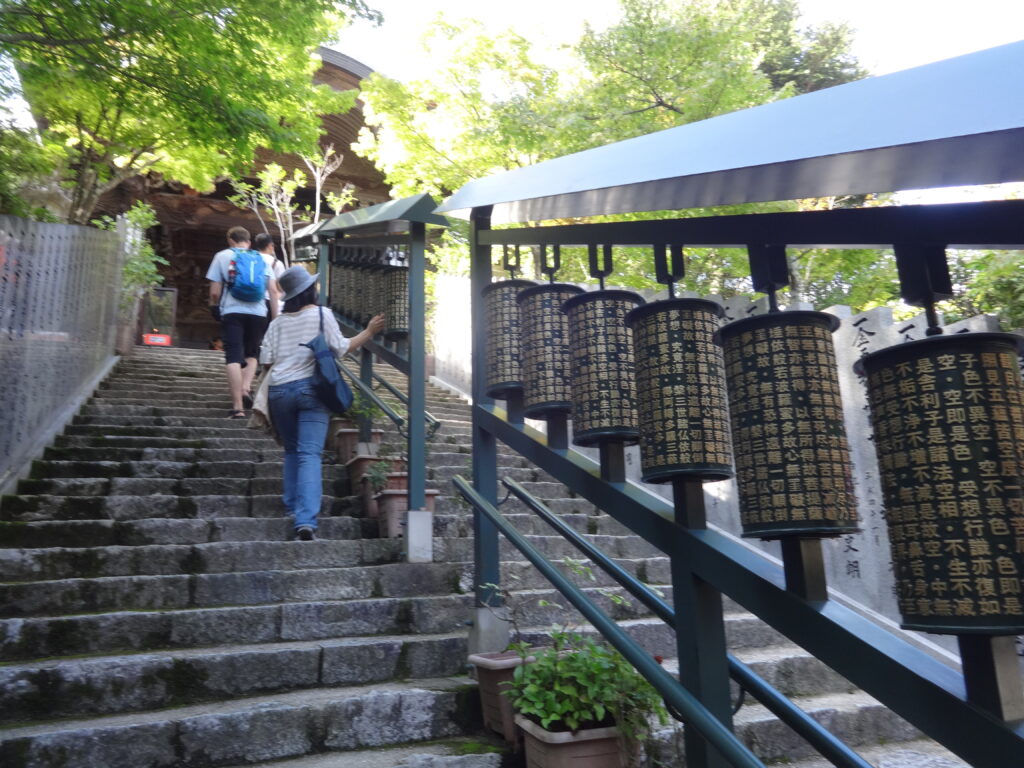
We also walked along a path lined with “cap-wearers”, small statues with unique features.
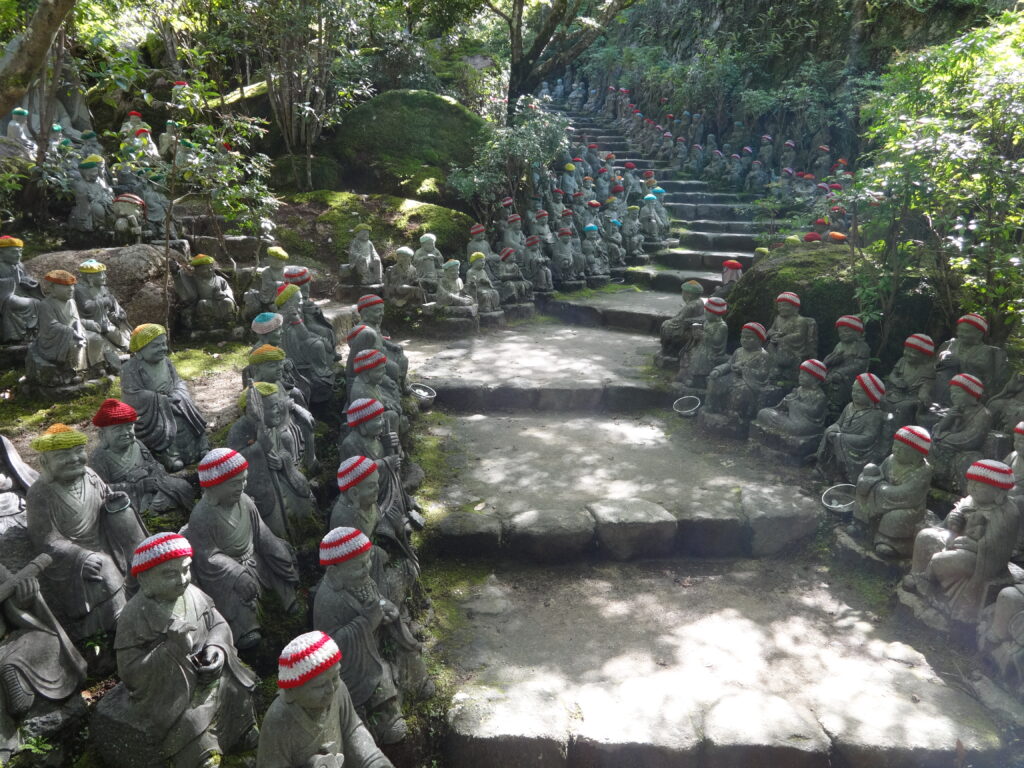
Back at the coast, we were quite hungry, and since we’re not intrusive deer to steal food from other tourists’ bags, we visited one of the local restaurants in the shopping street Omotesando.
A common practice in Japanese restaurants and bistros is to display the offered food in a glass showcase. The advantages are undeniable: you know in advance what you’re getting, you don’t need English (more like THEY don’t need it), and you get food that looks exactly like its plastic model.
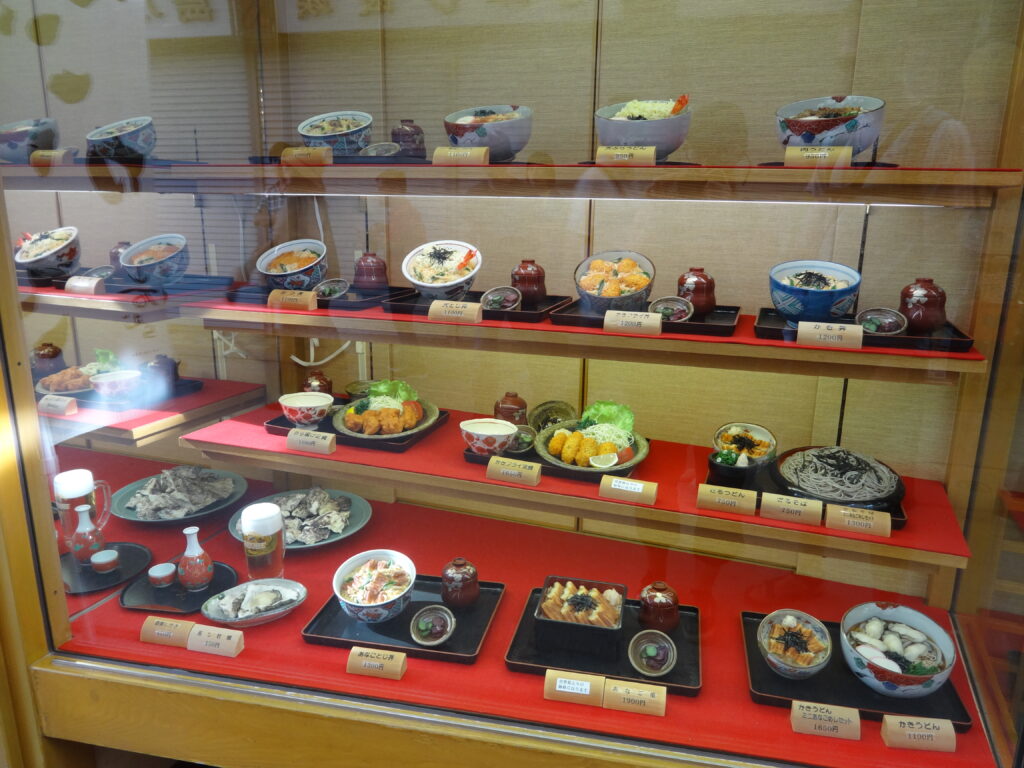
We had beef over rice and tonkatsu with egg over rice (miso soup and water to drink were automatically included). The world was happy and shiny again.
-endy-
DONKEY’S SPECIAL:
-mj-